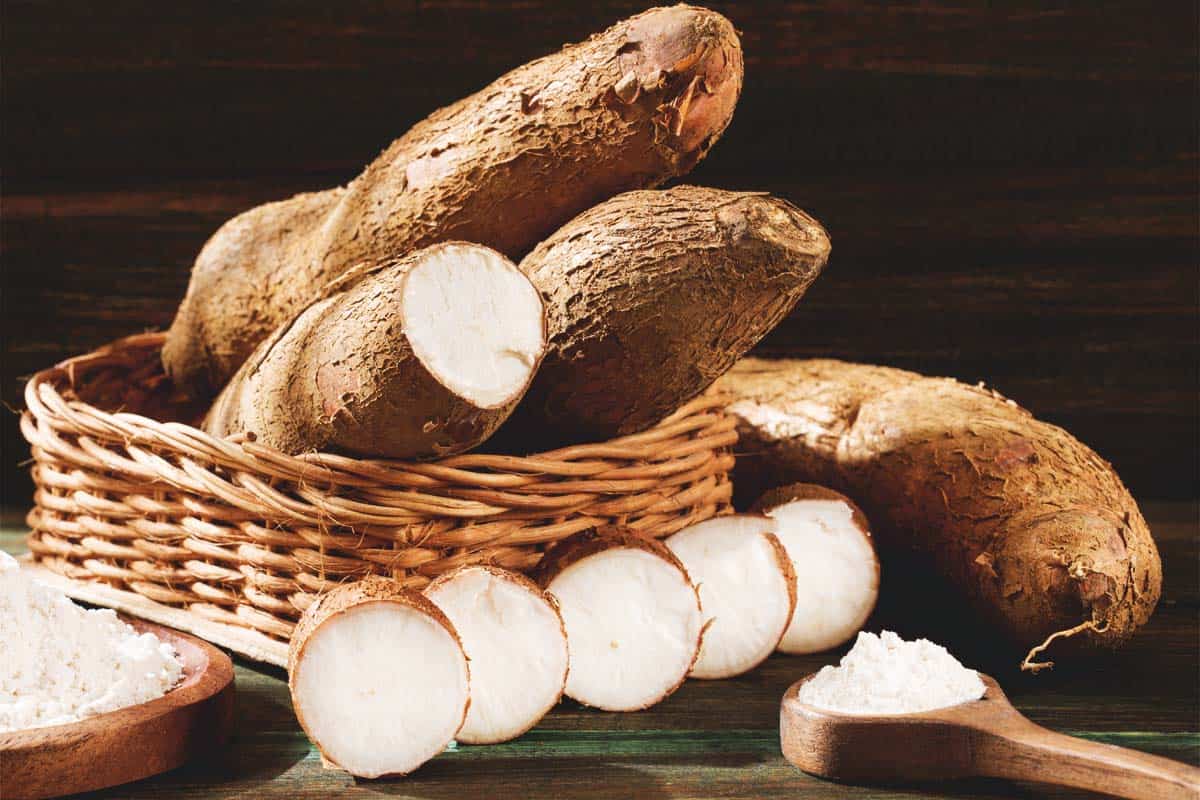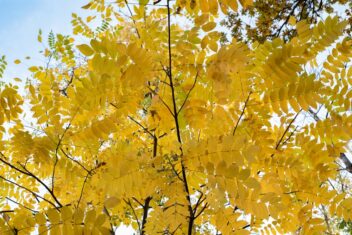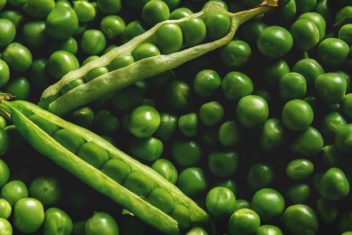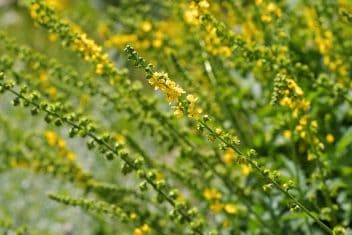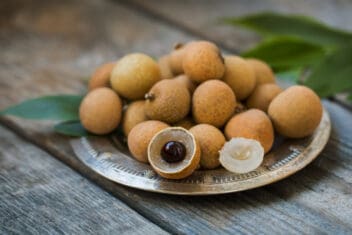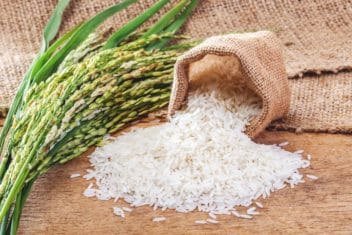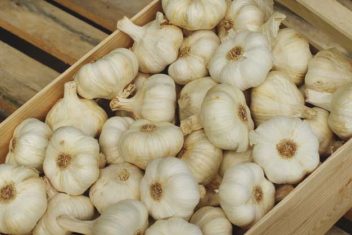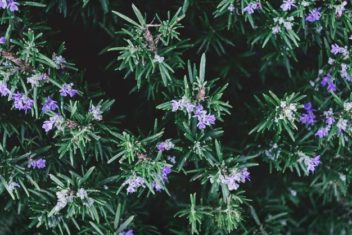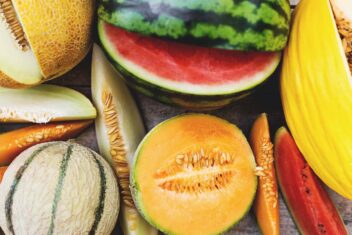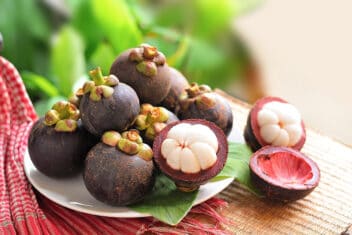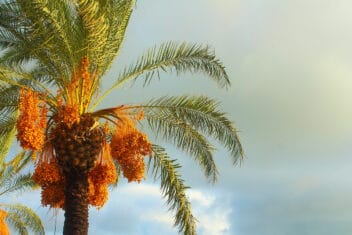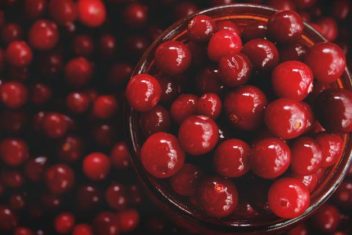Cassava is a wonderful, yet little known tropical root crop. The crop has been a lifesaver in many countries around the world thanks to its high nutritional value. It’s full of starch and carbohydrates, so it provides a nutritious meal, which is why its third-largest source of carbohydrates in tropical areas.
Cassava, often called yuca in the U.S., is relatively simple to grow and one plant gives you an extremely generous harvest because it keeps growing from the same plant. The plant is practically pest free and drought resistant.
As well as being an important staple crop, cassavas are full of nutrients and are good for digestion. The drawback is cassavas contain large amounts of cyanide, so you must cook it in order to eat it. On the bright side, the cyanide is one of the reasons cassava has few pests. Cassavas also store well and freeze well.
If you can find cassava seedlings or a piece of root to plant, give growing cassava a try. Don’t let the fact that raw cassava contains cyanide put you off. It’s as simple as cooking to remove the compounds.
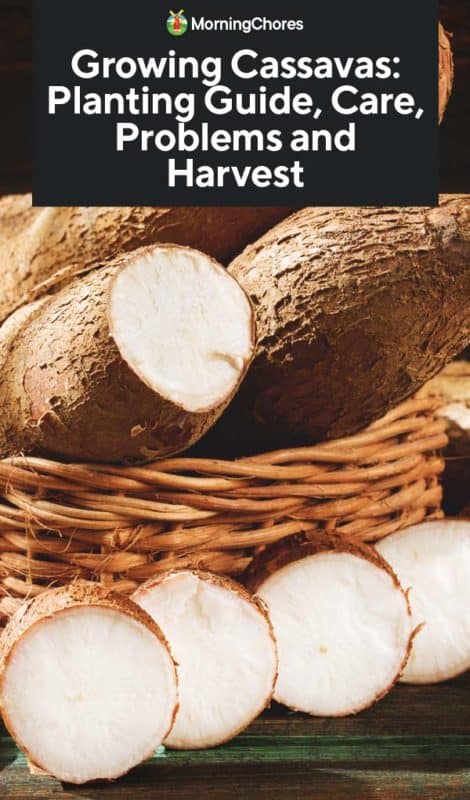
Varieties of Cassava
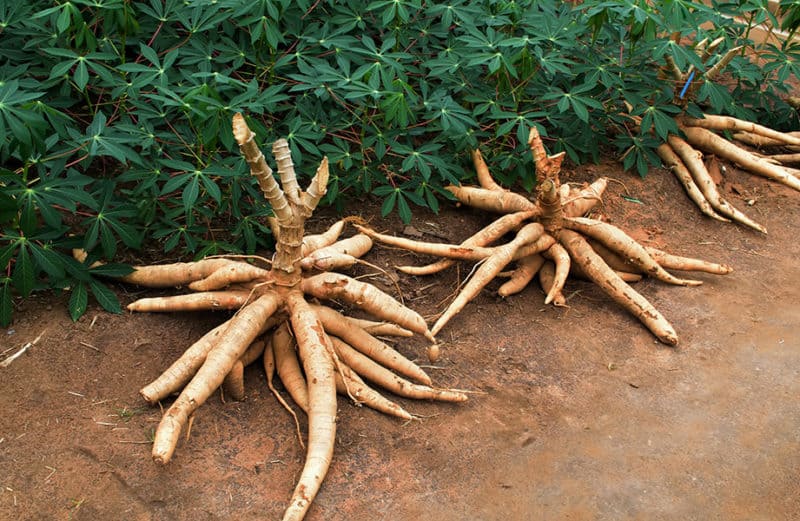
There are two major varieties of cassavas: sweet and bitter.
Sweet Cassava
Sweet doesn’t mean its higher in sugar, it means it contains less cyanide and requires less processing to remove it. This type generally has higher yields.
Recommended sweet varieties include:
- Katabang
- Brasil
- Golden Yellow
- Macan
Bitter Cassava
Bitter cassavas have much higher levels of cyanide and therefore require complicated processing to remove it. For home and smaller crops, sweet cassava is best.
How to Plant Cassavas
Growing Zones
Cassava is from tropical environments and it needs 8 months of heat to grow well, ideally zones 8-11. Growing cassava below zone 8 is impractical.
When it gets cold, cassavas freeze to the ground, but they’ll come back to life and gift you with wonderful roots and leaves.
Sun Requirements
As you’d expect from a plant that originates in a tropical environment, cassava thrives in full sun. It likes heat and humidity.
Soil Requirements
Cassava is one of those plants that grow well in any soil type, even poor soil. Loamy soil rich with well-rotted organic matter produces the best results, however. Cassava may struggle in clay or compact soil, but even then it will produce enough to harvest.
Soil should have a pH between 5.5 and 6.5 to produce the best results.
When to Plant
Plant cassavas indoors once temperatures are warm outside. Transplant when temps have reached at least 70°F. Harden plants off for 7-10 days before planting, and protect plants from cold. Transplants grown from stem propagations should be ready after 4-6 weeks. All growth stops at 50°F and below.
Container Planting
Cassava grows to up to 12 feet tall and requires a lot of space for the roots and isn’t suitable for container planting.
Planting Cassava
Cassava plants are hard to find, but if you can get a hold of stem cuttings you can start your own cassava plant, which will keep you going forever.
Simply take 11-inch cuttings of stems that are over a year old. Ensure you have between 4 and 7 nodes on the stem. Plant them in suitable soil either laying down on its side 2 inches deep or sticking out of the soil like a stake. Make sure a quarter of the stem is planted. Within a week or two, new leaves appear and the plant is on its way.
Then, in about 12 to 18 months’ time, you’re ready to harvest your first cassava crop. It’s that simple.
Spacing
Plant cassava at least 3 feet apart with 3-16 feet between rows.
Caring for Cassavas
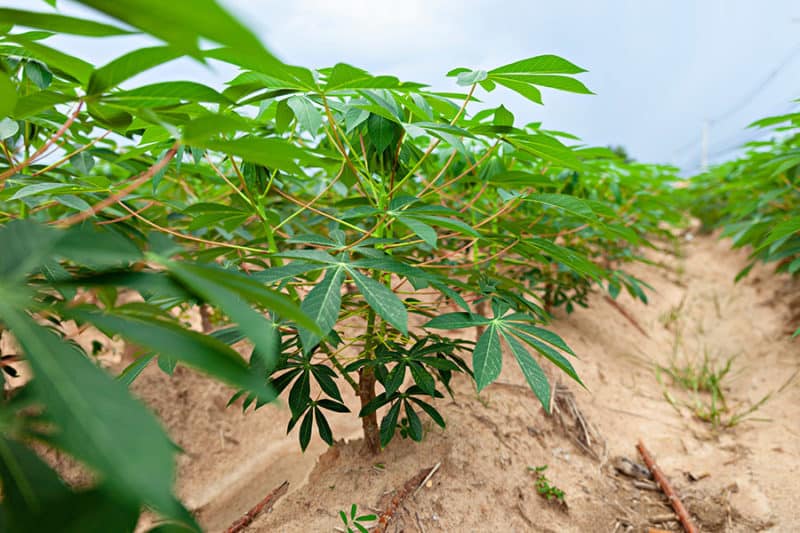
Fertilizer
Your soil should have well-rotted manure dug in at the time of planting. Within two months, add more manure or a good quality liquid fertilizer.
Water
Keep the soil moist in the first month of planting to give the stems a good start. If the cassava plant loses a lot of leaves it’s likely it’s not getting enough water.
Cassava is drought resistant, but water well and it will produce more roots of better quality. Don’t allow the soil to stay soaked, though, as this may cause the roots to rot.
Companion Plants for Growing Cassava
Grow cassava with beans and peas. Don’t plant cassava with potatoes.
Common Problems and Solutions for Growing Cassava
Cassava is hardy and isn’t bothered by too many pests and disease, but as with all plants, they’re susceptible to some issues.
Aphids
Aphids suck the sap from your cassava plant and in big enough numbers can cause it to become weak and wilted. Give the cassava plant a good blast of water to remove the aphids and then apply neem oil once a month for three months.
Locusts
In small or large numbers, locusts are deterred by neem oil. If you live in an area where locusts are present, treat the cassava plant monthly.
Bacterial Blight
If you have bacterial blight, you’ll see spots start on the leaves and they’ll slowly rot or at least go from a healthy, deep green to yellowish.
The best treatment is prevention. Ensure all stems planted show no signs of blight. If you see blight, cut it out and avoid watering the leaves.
Cassava Mosaic Disease
A rare but devastating disease, cassava mosaic disease causes curling of the plant’s leaves. You’ll also see mottling and twisted leaves. This causes a lack of root formation and a reduction in harvest.
Ensure the stem cuttings you use are free of the disease and source mosaic resistant cassava to avoid it.
Cassava Scale
Cassava scale is a tiny, white mussel-shaped scale that sucks the juice from plants. You’ll often notice a powdery white secretion on your cassava stems. A heavy infestation can kill a plant.
Keep plants well-watered and healthy so they can withstand an attack. Destroy infected plants and encourage beneficial insects.
Root Rot
If your cassava has root rot, you’ll notice drooping, wilting leaves that may fall off the plant. Roots will be soft and rotting. Root rot appears when the soil is too wet causing the root of the cassava plant to rot. This means the plant can’t absorb nutrients from the soil and will wilt and eventually die.
Since it spreads via water, it’s important to plant in an area with good drainage. Keep plants healthy and choose resistant varieties. I’ve had some success with removing some of the soil around the cassava root to allow the water to evaporate.
Anthracnose
Anthracnose attacks the stem of cassava plants. You’ll notice leaf spots, cankers on stems, and tip dieback. Remove infected plants and your sanitize tools. Plant resistant varieties and keep plants well-watered and healthy.
Cassava Mites
Cassava mites feed on the underside of leaves. Healthy plants can usually resist an attack, but you can also encourage predatory insects, and trim away badly infested areas. Plant alongside pigeon pea, which deters the mites.
How to Harvest and Use Cassava
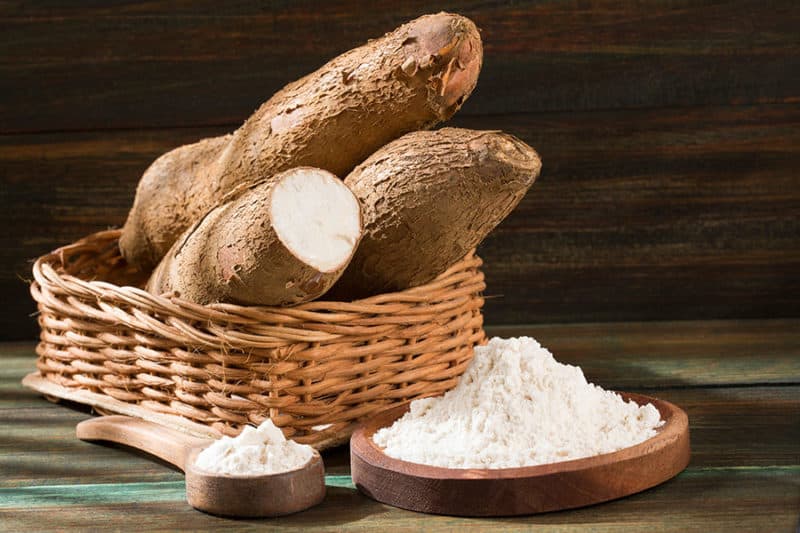
Here’s where the fun begins. I chop the entire plant down with a machete, leaving about a foot of the stem behind. Carefully dig the soil away. The roots grow away from the main stem and are normally within the first two feet.
Look for deep brown roots that appear flaky. Be careful not to damage the roots as you dig them up as they won’t store well.
Use the branches you’ve just chopped down to create the new stems. Plant them as described above and get the next crop on the way.
You can store roots in a cupboard for a week, or you can freeze them. You can also keep them peeled in water in the fridge for up to a month. Change the water every few days.
Preparing the Roots
Cut a slit down the root through the skin, which is about a quarter of an inch thick. Peel the brown skin off to reveal the lovely white, creamy flesh.
Cut the root in half lengthways and remove the thin woody core. Chop and boil the roots in water until soft. Discard the water carefully as it contains the cyanide compounds.
The roots can be used in soups, curries, and slow cooker meals. My particular favorite is cassava chips. To make them, boil the root, cut thinly and fry.
Leaves
The leaves of the cassava plant are also edible, but as with the roots, you must boil them to remove the unfavorable compounds. They taste a bit like collard greens. You can freeze the leaves raw and use later.
The Bottom Line
Don’t let the toxic compounds put you off. They’re as simple to remove as boiling the root. Cassavas give you so much nutrition without needing a ton of space or care. If you live in the right area, they’re well worth the work.
Cassava is such a simple crop to grow and when all else fails in the garden, cassava will provide you with plenty of roots and greens. You can replant straight away before you’ve even processed the roots.
The stems may be hard for you to find depending on where you live, but cassava is becoming more and more popular so keep a lookout for available stems. When you’ve planted cassava once, you’ll have a lifetime supply.
